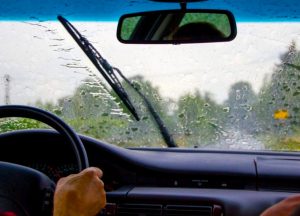Driving Tips on a Rainy Day or Season
Driving Tips on a Rainy Day or Season, Driving in rainy conditions can be challenging and potentially dangerous, so it’s important to take extra precautions to ensure your safety and the safety of others on the road more especially when on a self drive trip. when it rains most of the roads become steep and hard to penetrate. Most of Uganda roads are marram it becomes muddy more specially every after it pours.
Here are some driving tips for the rainy season
Slow Down:
You are advised to slow down when driving in the rain or after it rains. Wet roads can be slippery, and reducing your speed will give you more time to react to changing conditions
Increase Following Distance:
give a distance to the car which is in front of you. This extra space will give you more time to stop if the vehicle in front of you suddenly brakes
Turn on Headlights:
when it is raining, the visibility becomes very low even during the day, so it’s a good idea to turn on your headlights. This increases your visibility to other drivers and reduces the cases of causing unnecessary accidents.
Use Windshield Wipers:
 Ensure your windshield wipers are in good working condition and use them to keep your windshield clear of rain. Replace wiper blades if they are streaking or not effectively clearing the windshield. The windshield wipers remove rain, snow, dirt, pollen, frost and other debris quickly and smoothly at the push of a button! The windshield wiper motor moves the windshield wiper arms across the windshield
Ensure your windshield wipers are in good working condition and use them to keep your windshield clear of rain. Replace wiper blades if they are streaking or not effectively clearing the windshield. The windshield wipers remove rain, snow, dirt, pollen, frost and other debris quickly and smoothly at the push of a button! The windshield wiper motor moves the windshield wiper arms across the windshield
Defog Windows:
Use your defroster or air conditioning to keep your windows from fogging up. Foggy windows reduce visibility. The reason for foggy windows has to do with temperature and the air’s moisture content. On a cold day, any moisture in the air inside your car from passengers exhaling, snow on your boots, etc
Avoid Cruise Control:
Don’t use cruise control in wet conditions. You want to have full control over your vehicle’s speed and acceleration. Unless you’re driving on a straight road, you should avoid cruise control at all costs. Cruise control isn’t able to detect winding roads, meaning you won’t slow down if you’re forced to make a sharp turn.
Stay in the Center Lanes:
Water tends to accumulate in the outer lanes, so try to stay in the center lanes of the road. To get a clear idea of what the lane center is, you should focus on things far away from you. It is easy to move away from the center of the lane if you keep looking close by. Focus on the objects on the horizon before your vehicle
Avoid Puddles:
Puddles can be deeper than they appear, and driving through them at high speeds can lead to hydroplaning. Try to avoid driving through standing water if possible.
Be Cautious at Intersections:
Be especially careful at intersections where oil and debris can accumulate, making the road particularly slippery
Brake Gently:
Apply the brakes gently to avoid skidding. If your vehicle has anti-lock brakes (ABS), maintain steady pressure on the brake pedal, and the system will prevent wheel lock-up.
Turn Off Hazard Lights:
Use your hazard lights only when your vehicle is stopped or disabled on the road. Do not use them while driving, as they can confuse other drivers. The emergency lights are wired through the turn signal and flasher relays. These are usually located in the fuse panel found in the engine bay, in some cases one relay controls both functions.
Plan Ahead:
Check weather forecasts before you start your journey. If possible, delay your trip if heavy rain and storms are predicted unless it has caught you on the way
Keep Both Hands on the Wheel:
Maintain a firm grip on the steering wheel with both hands to ensure better control of your vehicle.
Avoid Distractions:
Distracted driving is dangerous in any weather condition, but it’s even more critical to stay focused when driving in the rain.
Stay Calm:
If your vehicle begins to hydroplane (lose traction with the road), remain calm. Ease off the accelerator and steer in the direction you want to go. Avoid sudden movements.
Maintain Your Vehicle:
Ensure that your tires have adequate tread and are properly inflated. Proper tire maintenance is crucial for safe driving in wet conditions.
Stay Informed:
Listen to traffic reports for updates on road closures or flooding. Be prepared to change your route if necessary.
Remember that rainy conditions can reduce visibility and increase the risk of accidents. It’s essential to adjust your driving habits and be extra cautious when driving in the rain. If the weather becomes too severe, consider pulling over to a safe location and waiting until conditions improve. Your safety should always be the top priority.
You Can Book Or Inquire Any of Our Cars Now At an Affordable Price
Are you interested in any of our safaris? or you are interested in hiring a car and self drive around? Please Let us know your travel needs and interest by filling the form below and we will send you all the necessary information about our trips and cars available regarding the number of people on trip.We can’t wait to serve you.
✓ No Hidden Costs | ✓ 24/7 Support
